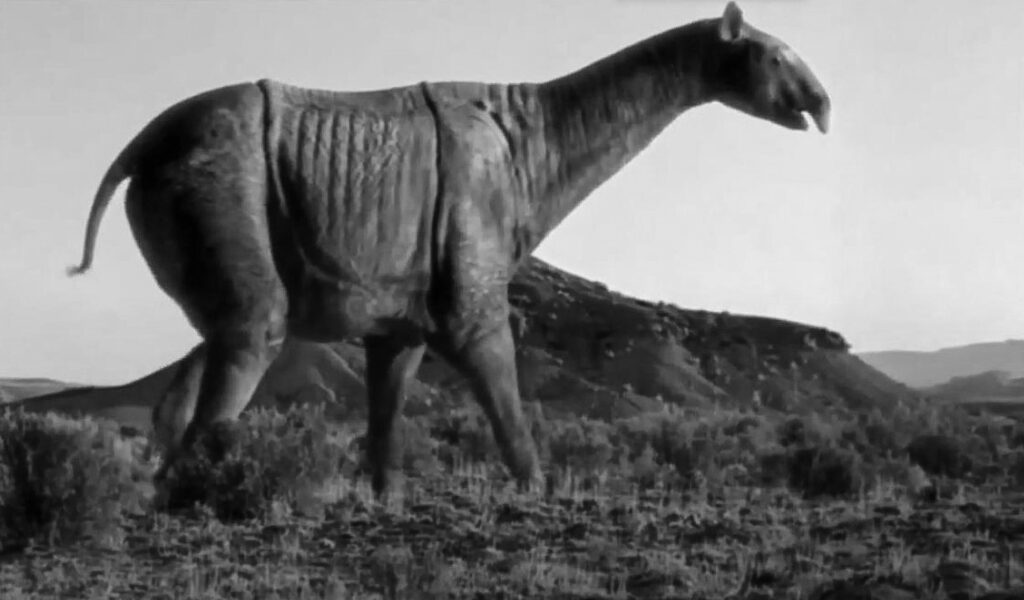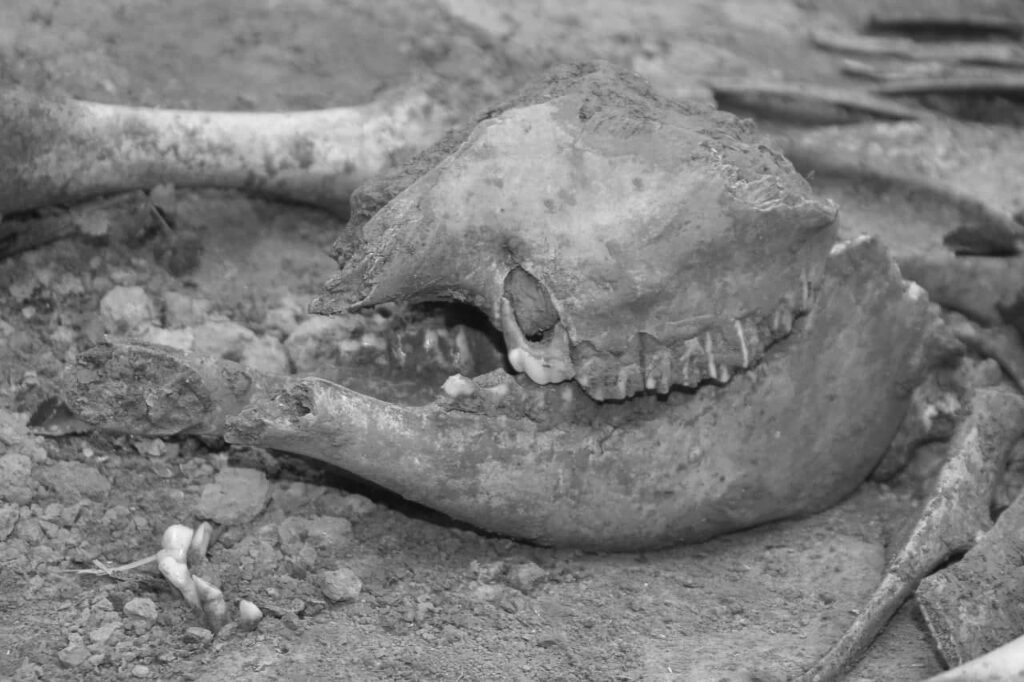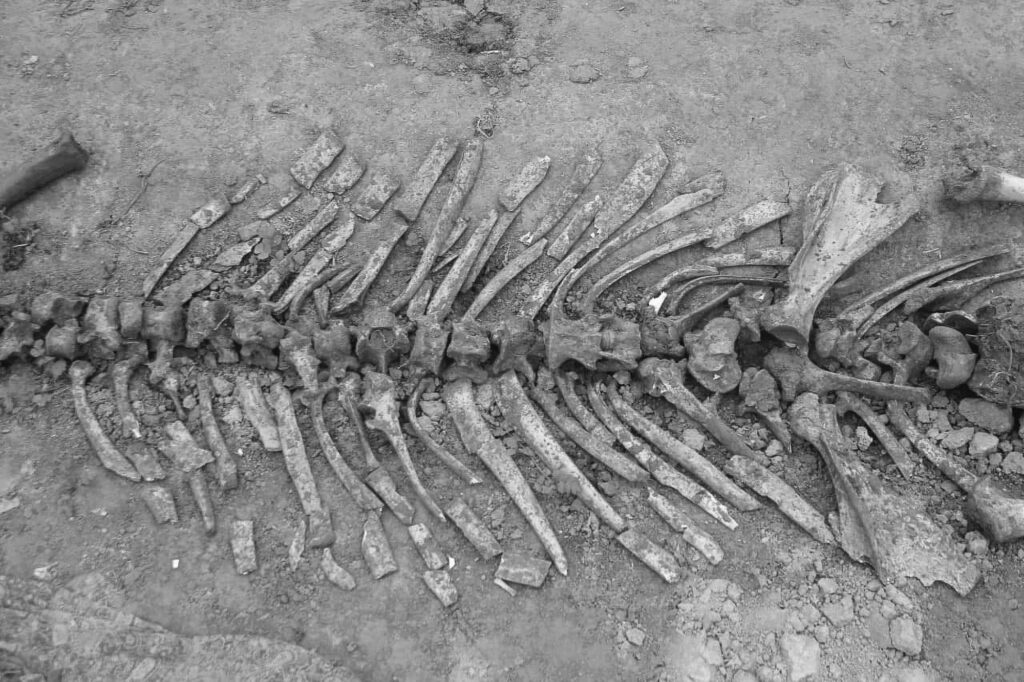A farmer digging a hole in order to build a greenhouse has found an almost complete skeleton of a prehistoric Indricotherium, the ancestor of the rhino that was bigger than an elephant and recorded as the largest land mammal ever to have walked the earth.
The discovery was made in the village of Kara Tepe in the district of Namangan in Uzbekistan with the news of the discovery released only now even though the date of the discovery was not revealed.
The farmer named Najmiddin Ubaidullaev, whose age was not disclosed, was digging a hole in his garden for the foundations to build a greenhouse when he found the fossilised beast, which according to local news site Ren Tv, was perfectly preserved.
Researchers from the State Museum of History and Culture studied the fossils along with two people from Namangan State University, a professor from the Biology Department and an archaeologist.

The experts found the preserved skeleton belonged to an ‘Indricotherium’, also called a Paraceratherium, which is a giant hornless rhinoceros that lived in the Late Oligocene and Early Miocene epochs, between 30 to 16.6 million years ago.
Indricotherium are the tallest and heaviest land mammals that have ever lived on Earth measuring eight metres (26 feet) long and standing at around 5.5 metres (18 feet) high.
It also weighed well over 30 tonnes (66,138 pounds) which is more than four times the weight of the modern elephant, the world’s heaviest living mammal.
The giant rhinos, which were primarily fed on plants, mostly lived in Asia, concentrating in areas of modern-day Kazakhstan, Mongolia, China, Pakistan and India.
The reason for their extinction is unknown. Scientists have cited several potential factors such as climate change, changes in their habitat, destruction of forests or depletion of food.


Members from the State Museum of History and Culture in the Namangan region say the findings serve as proof of the existence of the huge beasts in the area during ancient times.
It is unclear what will happen to the fossils once the studies are completed.
To find out more about the author, editor or agency that supplied this story – please click below.
Story By: Feza Uzay, Sub-Editor: Marija Stojkoska, Agency: Newsflash
The Ananova page is created by and dedicated to professional, independent freelance journalists. It is a place for us to showcase our work. When our news is sold to our media partners, we will include the link here.




